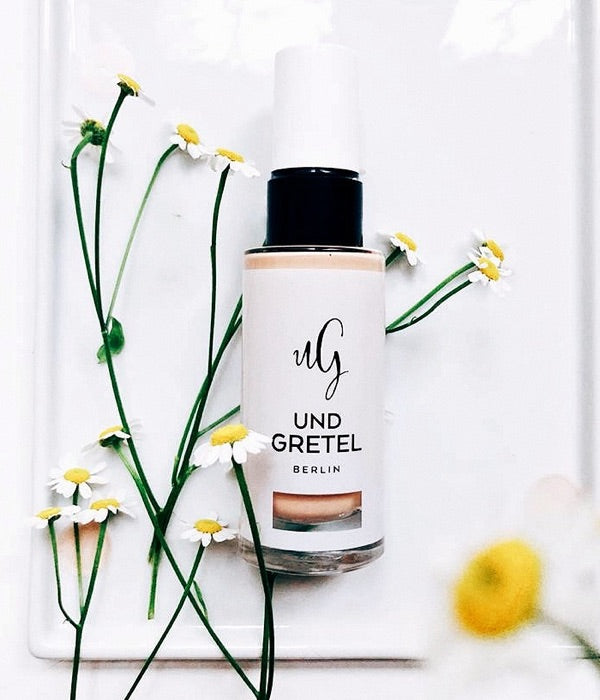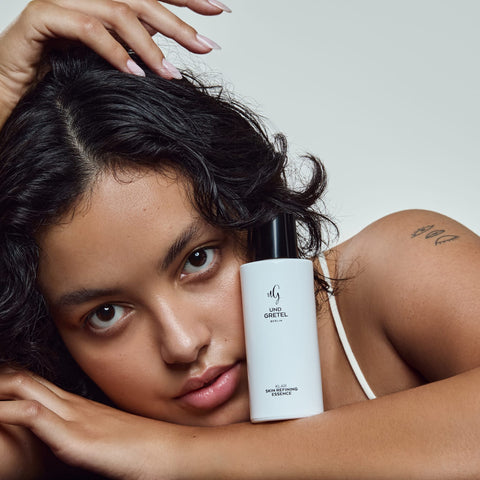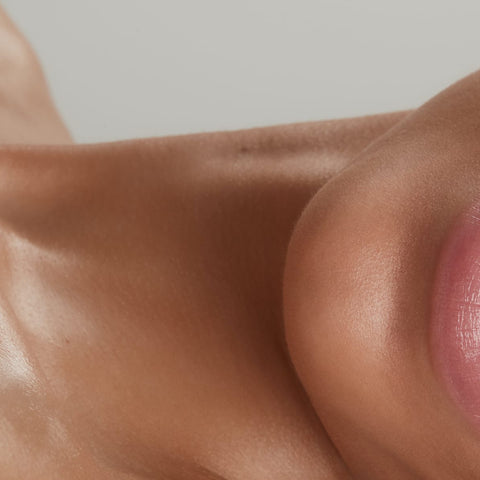Sodium Laureth Sulfate, Polymethyl Methacrylate, Ethylparaben, Butylphenyl Methylpropional, Paraffinum Liquidum...
If you're confused by what they mean, you're not alone. These terms seem to have little connection to our everyday lives. Yet, as rarely as we utter these tongue twisters, they're used every day – in the form of cosmetic products.
Women in Germany “eat” around 3 kg of lipstick in their lifetime*.
That's 1,000 lipsticks, each weighing 3 grams. A credit card weighs about five grams – but no one would think of eating it. Nevertheless, we already absorb that much microplastic every week from the environment, through the air, water, and food – and the pollutants, including microplastic particles, from cosmetics are on top.**
We believe it's important to raise awareness! Controversial ingredients and synthetic preservatives are simply no longer appropriate. To shed light on the issue, we've listed the five most common contaminants.
Great on the outside, terrible on the inside: The bad stuff in conventional cosmetics
The paraben problem
Parabens are often used as preservatives in cosmetics. In addition to their ability to improve shelf life, they are also suspected of causing hormonal changes. Pregnant women (and growing children) should therefore avoid their use. Parabens have also been linked to hormone-related cancers. However, we have some good news: The preservative can be easily identified by the "-paraben" ending, such as methylparaben or benzylparaben.
And the even better news: Paraben compounds are not permitted in certified natural cosmetics such as those from UND GRETEL.
Microplastics in make-up and co.

Few people expect plastic in makeup. But many lipsticks, lip glosses, eye shadows, powders, creams, and the like contain tiny plastic beads. To be more precise: one in five cosmetic products in German-speaking countries contains microplastics. Difficult to identify for laypeople, they appear in the ingredient list under names such as polyethylene (PE) or polymethyl methacrylate—thus, they can be identified by the word "poly."
Not so fragrant: (Synthetic) perfume in cosmetics
We all want to smell good. Therefore, fragrances are one of the most common ingredients in cosmetics that have no real effect. Most fragrances don't need to be defined on the packaging other than as "parfum" or "fragrance." However, synthetic fragrances in particular can trigger allergic reactions—some of them, such as eugenol, citronellol, or farnesol, must therefore be listed in the ingredients list.
Our UND GRETEL Foundation LIETH also contains perfume, but we only use natural fragrances in our certified natural cosmetics – i.e. BDIH compliant.
The devil is in the details: mineral oil
Derived from petroleum, some mineral oils can cause cancer.
Mineral oils can be identified by terms like paraffin, ceresin, or other cryptic words. They have one thing in common: they are a cost-effective alternative to vegetable oils. Unlike high-quality vegetable oils, they simply sit on top of the skin instead of absorbing and nourishing it. This means that mineral oils can clog pores.

Mineral oils in lipsticks and lip balms are particularly problematic because they are absorbed directly into the body via the mouth and deposited there. It is believed that the two so-called MOSH and MOAH groups, in particular, can cause genetic alterations and cause cancer. Mineral oil is prohibited in natural cosmetics.
Silicones in cosmetics
Hardly any other synthetic material has received as much negative attention as silicones . This ingredient is increasingly being discussed, especially in connection with shampoos. Silicones deposit a shiny film on hair, which fills in even brittle areas and creates a smooth feel. At first glance, this makes hair appear fuller, smoother, and healthier without having any conditioning effect. Silicones or silicone oils are also used in creams or lipsticks: Here, the liquid synthetic material serves to visually smooth out wrinkles and create a pleasant skin feel.
Silicone is not only harmful to the skin, but also harmful to the environment: If you wash off makeup, the persistent ingredient can enter the environment via wastewater. Marine life is particularly affected, as the silicones accumulate in their bodies. What further consequences this could have is still unclear. Silicones can be identified by the endings "-con(e)" or "-xan(e)."
These are all ingredients we can easily do without when it comes to our skin. But that doesn't mean we can't enjoy makeup anymore.
Our promise to you
Do you love makeup and don't want to sacrifice or compromise? Then you've come to the right place. We're here to offer you a contemporary and genuinely high-quality alternative to bad stuff .
When it comes to cosmetics, we are treated the same way as when choosing a partner: external values are important, of course – but what really counts are inner values.
Have you almost lost interest in makeup? That doesn't have to be the case! We have a truly 100% natural alternative for you. From avocado oil and chamomile extract to clary sage distillate – all the natural ingredients used by UND GRETEL have a nourishing, healing, and balancing origin in nature. If you'd like to learn more about the ingredients in UND GRETEL products, you can read more here.

We believe that true beauty arises from a conscious balance between people and nature. Each product has been individually developed, improved, and perfected in a careful and lengthy process, and tested on celebrities, models, friends, and family – never on animals.
Whether LUK , LIETH , HOLT , or KNUTZEN —all our UND GRETEL products are 100% certified natural cosmetics. They contain no synthetic colors or preservatives, and are free of parabens, mineral oil, or silicones.
UND GRETEL is clean beauty at its best. Without compromise .
*Source: CodeCheck
**Source: The University of Newcastle




